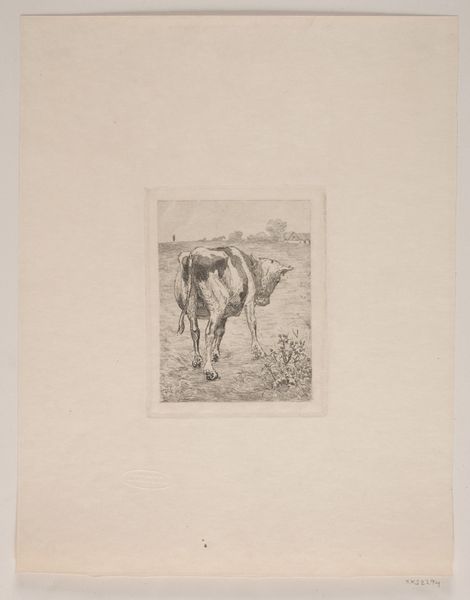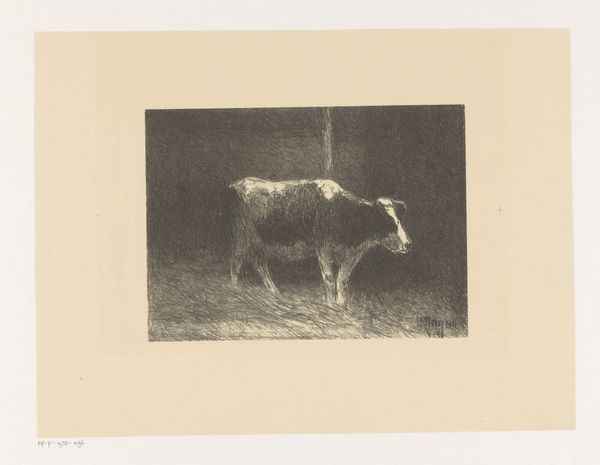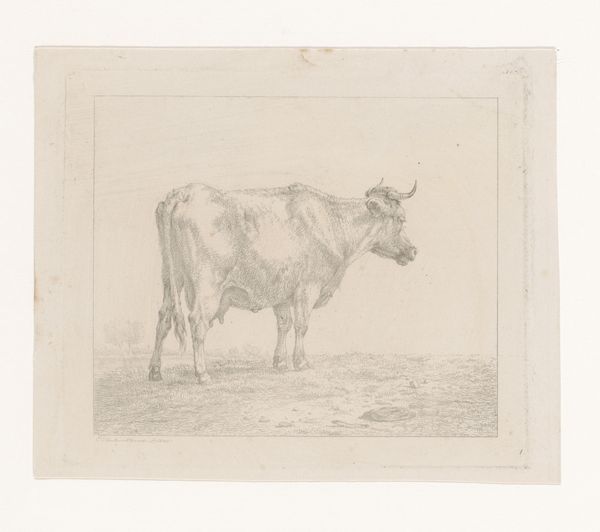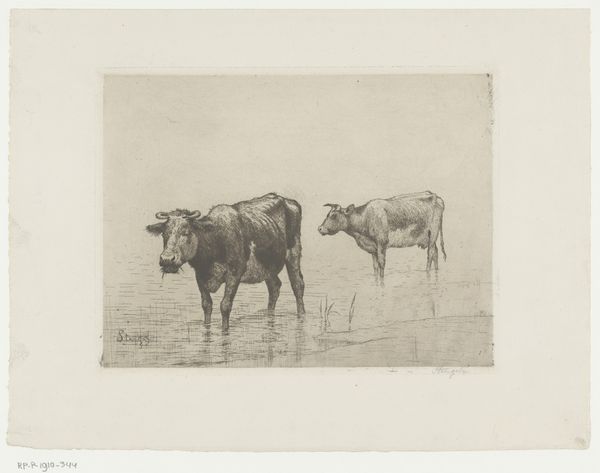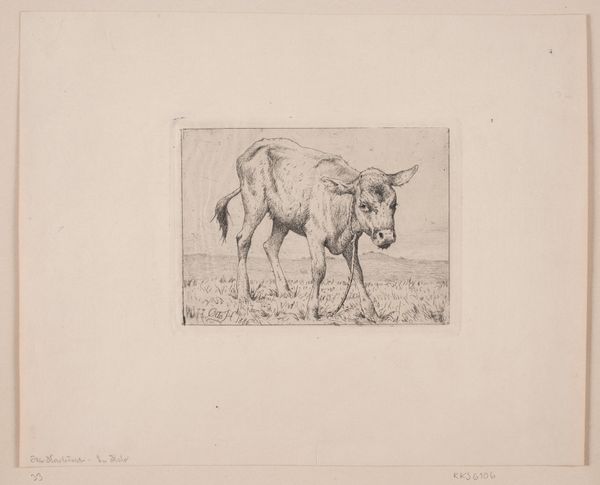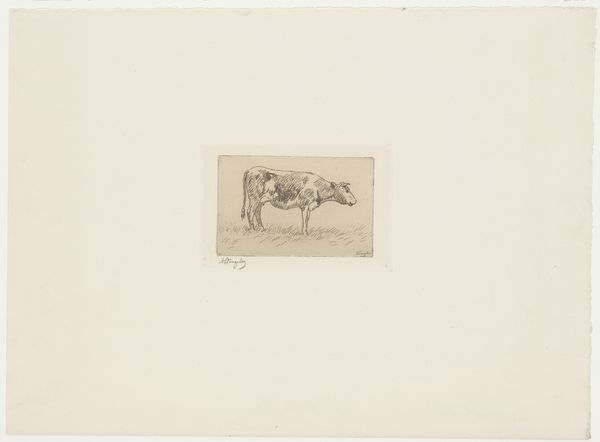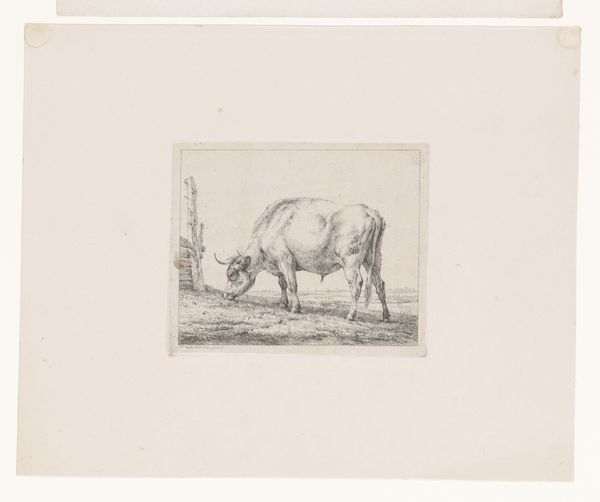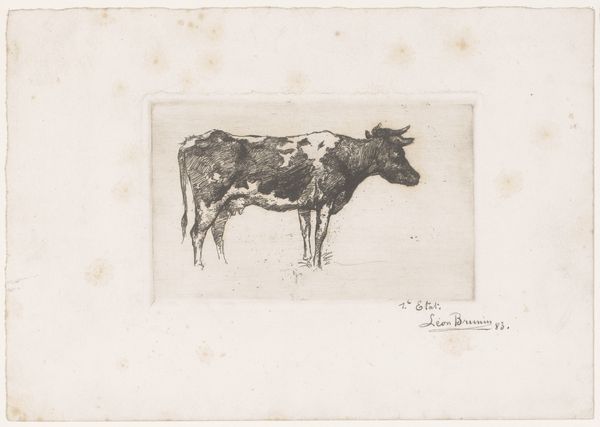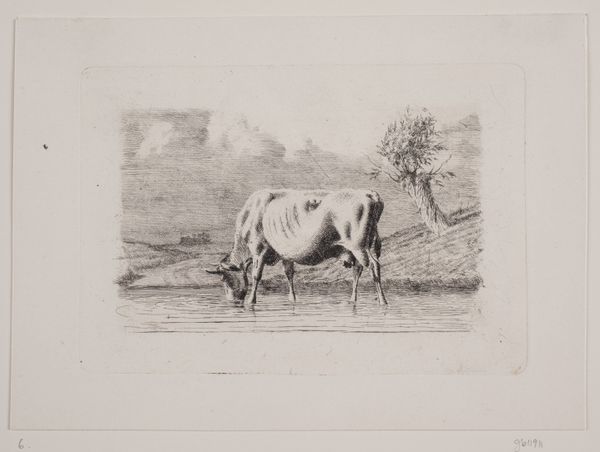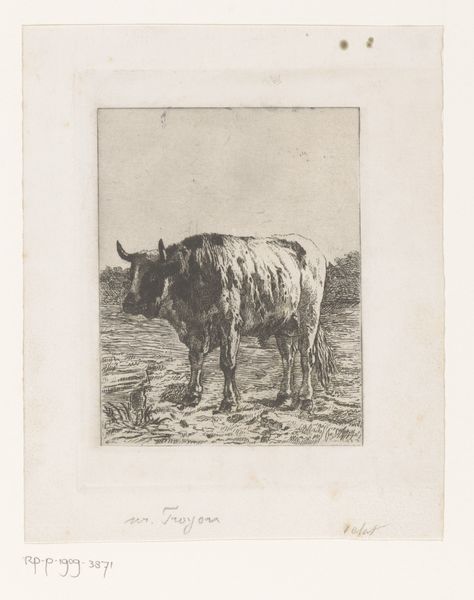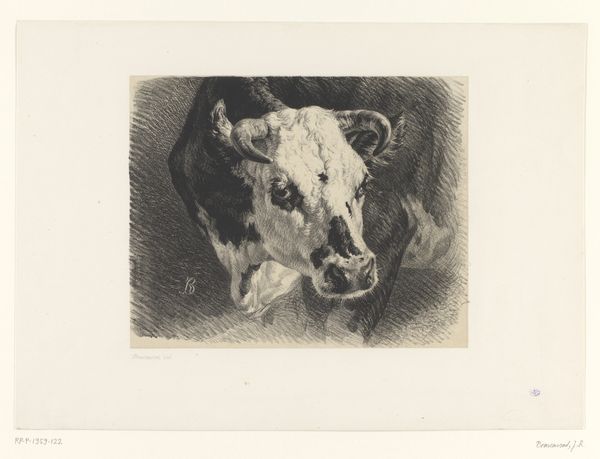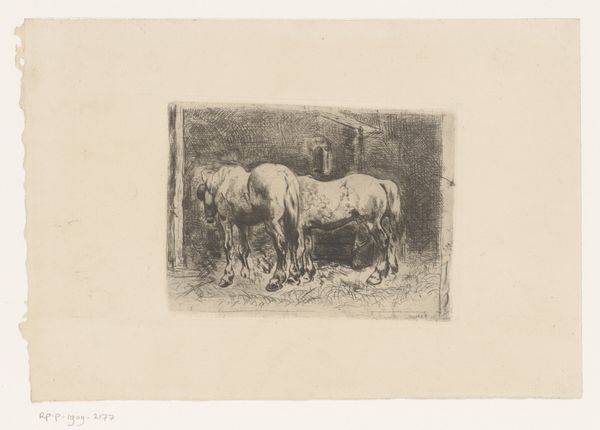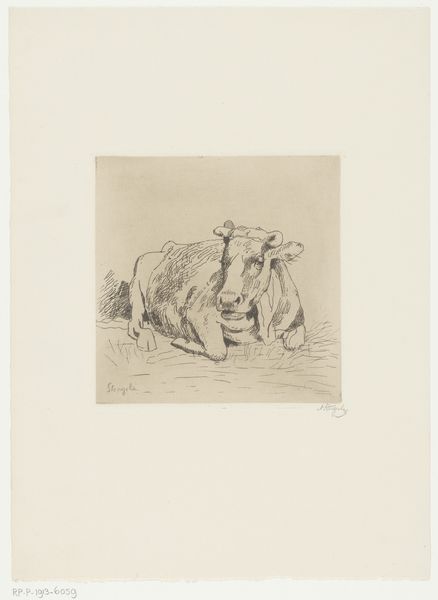
print, etching
#
animal
# print
#
etching
#
landscape
#
realism
Dimensions: height 120 mm, width 157 mm
Copyright: Rijks Museum: Open Domain
Editor: This is Alphonse Stengelin's etching, "Koe in een plas," or "Cow in a Puddle," created sometime between 1862 and 1910. I'm struck by how commonplace yet monumental the image feels. A single cow, rendered with such deliberate detail, standing in shallow water. What does this tell us about its place in art history? Curator: It speaks volumes, actually. Consider the late 19th century: Realism was challenging academic art. This wasn't about idealizing nature or glorifying heroic figures. Stengelin depicts an ordinary animal in its everyday environment. Think about the rise of agrarianism in political discourse at this time too. What role do you think depictions of farm animals play in society’s values? Editor: So it's less about the beauty of the scene and more about portraying a certain societal connection to the land, the everyday labor and even the burgeoning middle class that depended upon agriculture? Curator: Precisely. Etchings like this circulated widely, reproduced in magazines and sold as prints. This made art accessible to a wider public, influencing tastes and values. The rise of the print market gave artists greater independence from traditional patronage, and even promoted democratic values. Editor: That makes me look at the image differently now. It’s not just a cow, but a statement about artistic independence and changing social structures. Were other artists focusing on this kind of mundane realism at this time? Curator: Absolutely. The Barbizon School in France comes to mind. They similarly embraced landscapes and rural life, rejecting the grand historical narratives. It represents a shift in the public’s focus – perhaps even celebrating an appreciation for authenticity over ornamentation. Editor: Wow, I didn’t expect so much context from just one cow! I guess that's why looking at art is more than just looking, isn't it? Curator: Exactly! It is about understanding the society that created it, and how it shapes our view of the world. This close observation also trains us to identify these structures that we find so interesting!
Comments
No comments
Be the first to comment and join the conversation on the ultimate creative platform.
